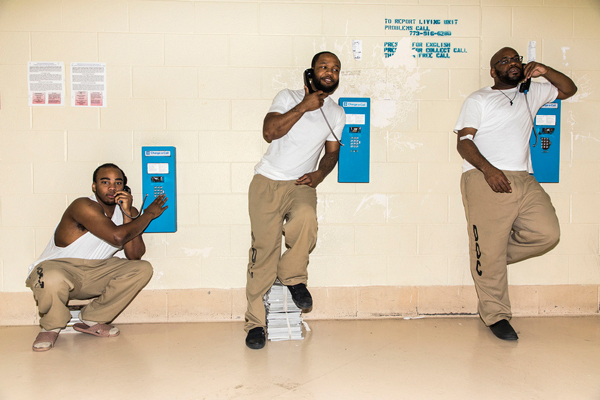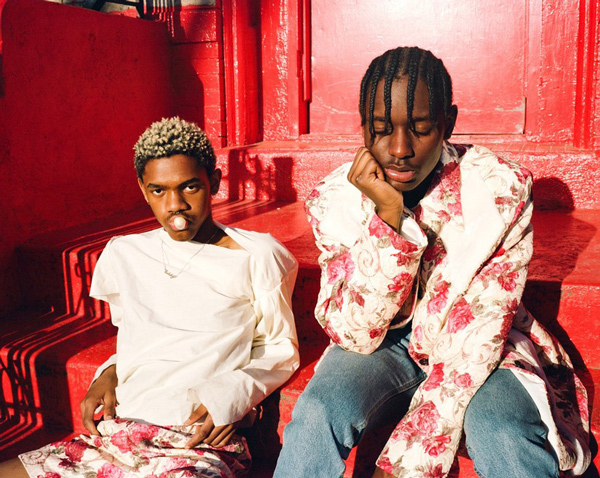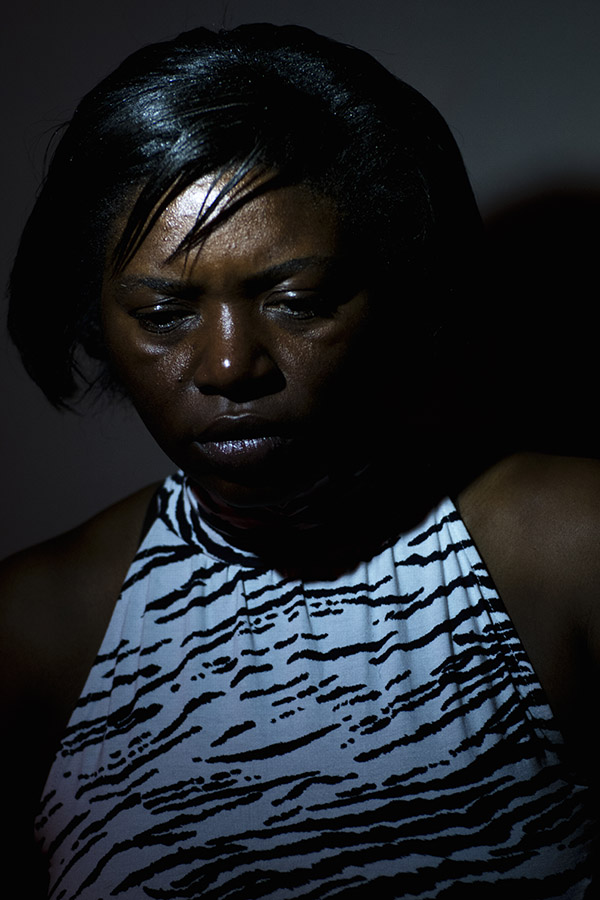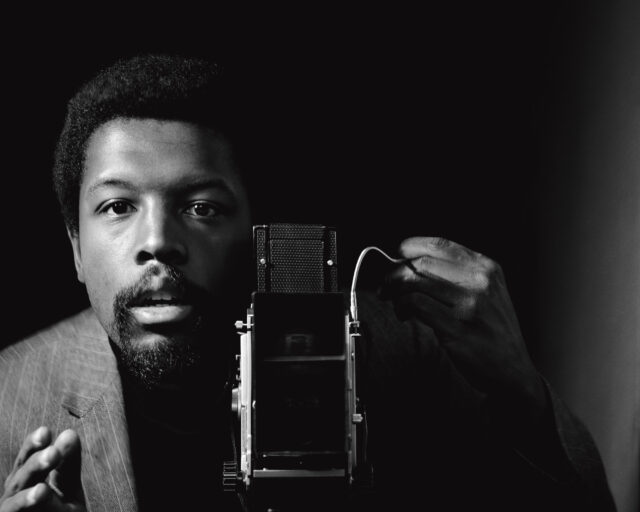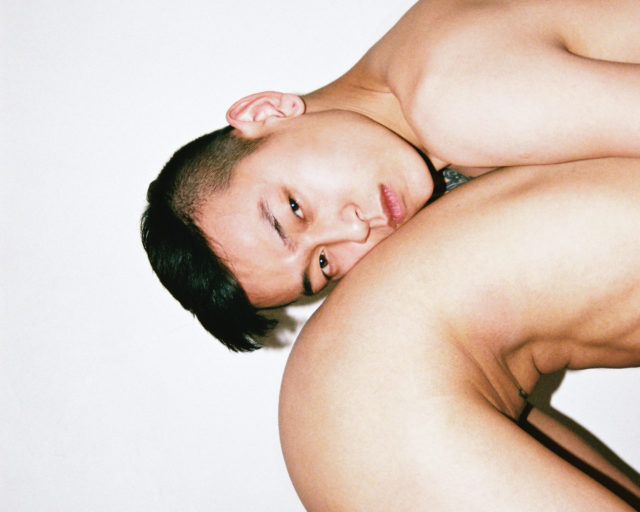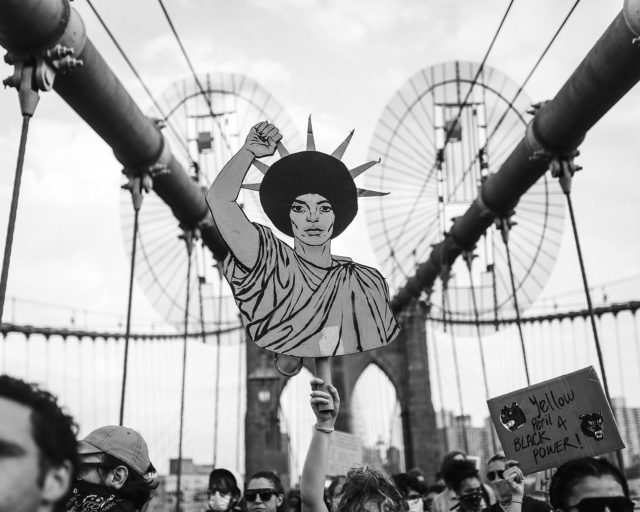The Way We Live Now
Meet the artists in the 2018 Aperture Summer Open.

Bubblegum Club, Moozlie, 2017
© Bubblegum Club
Bubblegum Club
Bubblegum Club (Jamal Nxedlana, creative director) is a digital platform and “cultural intelligence agency” based in South Africa. Through vivid, often color-saturated photography and editorial features, Bubblegum Club covers youth culture, fashion, television, music, and multidisciplinary art. This selection of portraits, made by Jamal Nxedlana together with Katelyn Hughes, Yonela Makoba, Orli Meiri, and Mimi Ndebele, is from Bubblegum Club’s stories on musician Langa Mavuso, stylist Bee Diamondhead, musician and fashion designer Moonchild Sanelly, and musician Moozlie, and the platform’s collaborations with brands, including the Amsterdam-based label Daily Paper. Bubblegum Club endeavors to frame the cultural production of a youthful South African creative vanguard, whose work frequently draws upon pan-African and diasporan histories and styles. “Acknowledging that we are part of a generation that reads the world almost exclusively through images,” Nxedlana says, “we are also consciously creating an alternative image repertoire to the repetition of colonial views of Africa.”
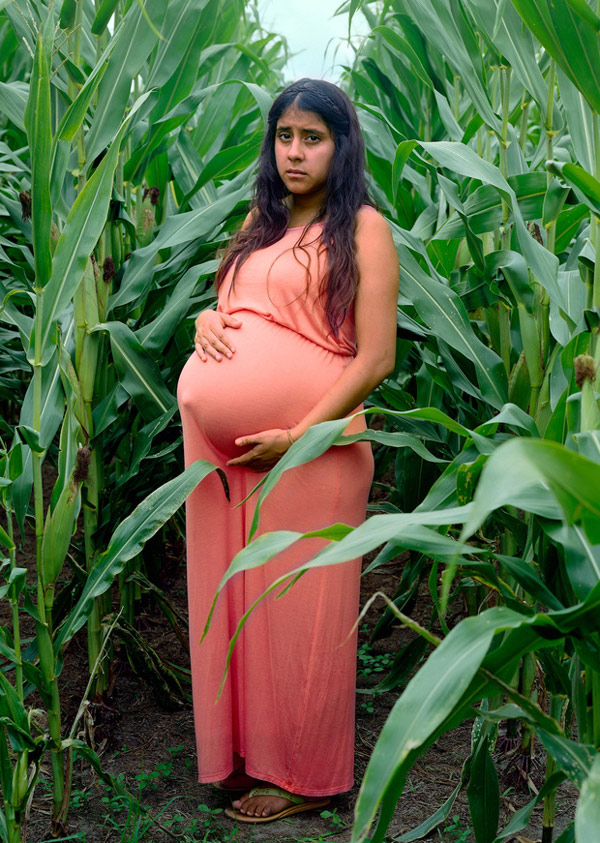
Diego Camposeco, Sabrina, 2017
© the artist
Diego Camposeco
Twenty years ago, Diego Camposeco’s parents emigrated from the Mexican states of Oaxaca and Veracruz to the US, following a wave of undocumented Mexican immigrants to North Carolina. Camposeco’s parents, and others like them in North Carolina’s fast-growing Latinx community, have transformed the landscape in two ways: through construction and agriculture, and through their adaptation of Mexican visual culture into their families’ new, hybrid lives in the US. In his work, Camposeco aims to make “reimagined documentary images”—images that blur the line between fact and fiction, in effect gesturing to the nuances of southern Latinx identity. “In many ways, the American South has become an extension of the Global South—a mindset that opens up new social and political possibilities for the Americas,” Camposeco says. For one image, Camposeco poses a young woman named Sabrina, in the third trimester of her pregnancy, against verdant stalks of corn ripening for harvest: a double portrait of earthly and human fertility. Sabrina later gave birth to a boy named Sebastian—an American citizen.
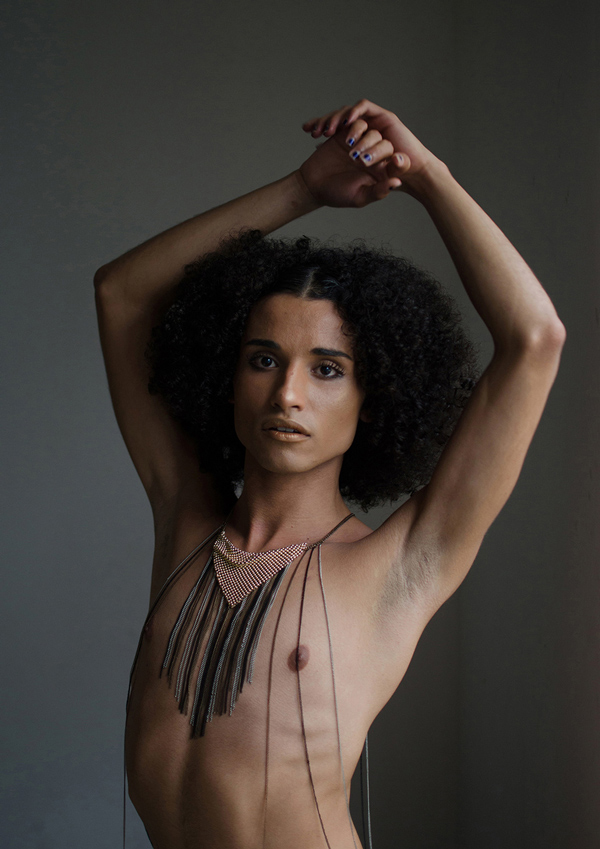
Camila Falcão, Terra, 2017
© the artist
Camila Falcão
More trans women are killed in Brazil than anywhere else in the world, yet Brazil also leads the world in the consumption of trans pornography. After living in New York and working for the photographers David Armstrong and Vik Muniz, Camila Falcão returned to her native Brazil to work as a freelance production designer and photographer. While volunteering for the Diversity Reference Center and working with transgender women, Falcão, who has long been interested in female identity, began to think about how to portray the enormous range of feminine expression. Her subsequent series Abaixa Que é Tiro—which translates from the Portuguese as “Low Shooting,” a phrase that is used by the LGBT community to mean, “Be careful, something awesome or fabulous is about to happen”—represents trans individuals in various states of change. These “many possible women,” Falcão says, “have been transitioning for some time,” or they are “bodies that are not going to change, but are still bodies of women, women with penises, with or without breasts.” Falcão’s work makes visual space for an underrepresented, too frequently maligned community, while also asking: What does it mean to be a woman?

Jillian Freyer, Three Women, 2018
© the artist
Jillian Freyer
Jillian Freyer grew up in New England in a house of four women. The transmission of knowledge about gender, passed between generations, is the subject of her series Private Ritual, comprising photographs of women in elemental settings. “A kind of closeness and a type of agony exists all at once,” Freyer says. Throughout this work, “private rituals are found within newly contextualized gestures, acting as a language between myself and the women I photograph.” In one portrait, an older woman appears in a smock, perhaps awaiting an outdoor haircut or color; she possesses, yet also seems to withhold, a steely wisdom. In another, three women are pressed together, their hair falling into the lens of a fourth, their identities both singular and enjoined. These pictures lead Freyer back toward nature, the memories of her youth, and “into a place familiar and strange.”

Jonathan Gardenhire, Untitled (Requiem for the Price of Culture 1), 2018
© the artist
Jonathan Gardenhire
The found images that populate Jonathan Gardenhire’s still lifes range from anthropological clippings and portraits by Robert Mapplethorpe, Lyle Ashton Harris, and Gordon Parks, to vernacular family pictures and sheet music from the African American composer Julius Eastman. These constellations of reference or reverence are meant to be reparative. “Over the course of my life, having to search for depictions of black men in popular culture, literature, and contemporary art has made distinct marks in the way I view myself as a black man,” Gardenhire says. Through his work, Gardenhire endeavors to reclaim knowledge production surrounding narratives of the black body—in physical images and in the social imaginary—in an attempt to reverse historical misrepresentations of black masculinity and sexuality. Framed together with texts by Jane Jacobs or James Baldwin, his assemblages are heavy with history, and form an analogue to bodily and social experience. “The images serve to depict my own sensitivity, sensuality, forgiveness, and quest to figure out what it means to me to be black, through portraits of other men and still lifes of objects that I associate with black culture.”

Roei Greenberg, Landscape Painting On Wall, Dining Hall, Kibbutz Yiftach, 2015
© the artist
Roei Greenberg
Thirty-five million years ago, a series of tectonic plates shifted from the length of contemporary Lebanon down to Mozambique, forming a border between Israel and its neighboring countries. The “Syrian-African break” created the Great Rift Valley and massive ancient landmarks, such as the Jordan River, the Dead Sea, and the Sea of Galilee, the sites of Roei Greenberg’s project Along the Break. Greenberg, who grew up in a kibbutz community and served three years of mandatory military service, journeyed along the Great Rift Valley on a highway referred to as “Route 90,” taking stock of such sites as an empty kibbutz dining hall (formerly the “beating heart” of the community) and a watchtower on the border of Israel and Jordan, a monument to a seemingly endless conflict. “The physical and metaphorical journey is a main theme in my work,” Greenberg says. “I take the idea of the American photographic road trip, the endless roads and vast open spaces, and import that notion into the small, restricted Israeli landscape.” In a place where the politics of land and territory are contested daily, the calm precision of Greenberg’s large-format scenes hints at the ways that past events—tectonic shifts and political battles—shape the landscape of the present.
Vincent Hung
For Vincent Hung, accessibility and collaboration are vital. Hung embraces the spontaneous nature of the snapshot, capturing portraits of his friends and family and using these images to create a larger dialogue regarding race and identity. The photographs from his series The Rose That Grew From Concrete challenge the viewer’s stereotypes by way of “disseminating contrived information.” Hung’s process doesn’t end with single images or traditional installations: he has made over seven hundred zines and distributed them across major cities in America. Each copy includes handwritten messages, and often the zine itself is inserted into a CD case, disguised as a mixtape. Additionally, Hung has collaborated with local businesses in Chicago to play slideshows of his photographs in shop windows, in order to reach as many people from as many places as possible. The images collected in Hung’s zine The Rose That Grew from Concrete are brimming with cultural signifiers, such as one of a young black man sitting on a leather couch, his hands contorted into different gestures, his shirt announcing the word SWAG. On the opposite page, someone has written “Only the strong survive.”
Lili Kobielski
More than two million people are currently incarcerated in the United States, a crisis that stems from racial discrimination, draconian drug laws, economic disparity, and substantial cuts to funding for mental health care. In 2015, Lili Kobielski began working with individuals in Chicago’s Cook County Department of Corrections, which has one of the largest pre-detention facilities in the world. There, among a daily population that averages around nine thousand people awaiting sentencing, it is estimated that 35 percent of detainees suffer from mental illness. More mentally ill people are therefore being treated in jail than in healthcare facilities, and for some who are uninsured, jail is the only place to receive medication and treatment. During her time at Cook County, Kobielski tried to portray a sense of daily life in the jail—men playing basketball or speaking on pay phones—as well as the terrifying realities that detainees face. She also conducted interviews with detainees, social workers, doctors, and superintendents. “A lot of people here, this is their first time in jail and they think this is Cook County,” one man said of Division Two, Dorm Two, an open space without cells or bars where detainees are treated for mental illness. “I try to tell them, you think this is bad? Make this your last because this is nothing, this is the tip of the iceberg.”
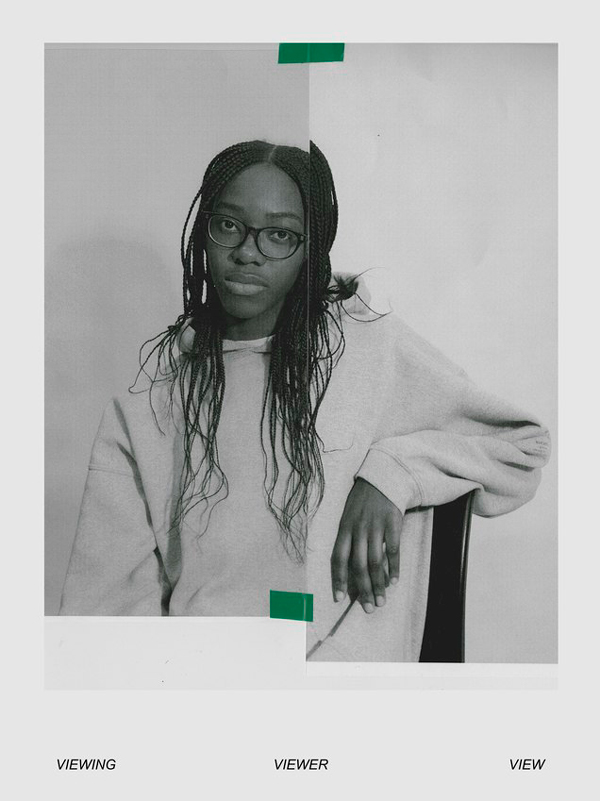
Luther Konadu, Viewing Viewer View, 2018
© the artist
Luther Konadu
In Canada, a country where white people have historically shaped the representation of black citizens, Luther Konadu’s photographs break with the past. Konadu, whose family is Ghanaian, pictures himself and other black figures in his collaborative studio portraits, which, in their use of text, re-photography, and multipanel series, recall the work of Lorna Simpson, Carrie Mae Weems, Moyra Davey, and Paul Mpagi Sepuya. “I am interested in working around the legacies of documentary photography as a way to create an alternate past, in order to imagine a different future of self,” Konadu says. “The resulting fragment images highlight my close community of family and friends in my personal studio as we intimately create a document of self on our own terms.” Konadu’s works often play up the physicality of the paper, with tape keeping images together, or prints installed unframed. Reflecting on the photographic process—and the power relations between photographer and subject—one image of a young woman staring directly into the camera carries the elusive banner VIEWING VIEWER VIEW.
Gowun Lee
Despite recent advances in LGBT activism in South Korea, many queer Koreans must hide their identities or face being disowned by family or dismissed by employers for coming out. Sexual acts between men in the Korean Army are punishable by military law, and the military has been known to conduct sting operations using dating apps. After Gowun Lee met a gay teenager while visiting South Korea, she became interested in the lives of LGBT Koreans, many of whom connect through social media and internet communities, but often are subjected to discrimination in daily life. Lee photographed each of her subjects facing away from the camera, a gesture, she says, that “reminds us of how Korean society continues to neglect them.” In the resulting series, I’m Here with You, Lee takes a cinematic approach to placing individuals in familiar everyday environments—a grocery store, a classroom, a bar, a train station, a public pool. By withholding their faces and their identities, Lee allows her subjects to speak both for themselves and for a larger community. Through her images, Lee intends to acknowledge the existence of LGBT individuals and “to spur us all to take action.”
Tyler Mitchell
Working between fashion, portraiture, and documentary, Tyler Mitchell often takes as his subject the beauty and creative lives of black men. Growing up in Atlanta, Mitchell says, “I was always mentally placing myself in relation to others and very conscious of my blackness. There’s a form of what I can only describe as ‘racial schizophrenia’ that goes on in the mind of an adolescent boy.” In 2015, Mitchell spent six weeks in Cuba, where he produced a series of vibrant photographs of the skating scene, collected in the photobook El Paquete (The package). Back in the US, perhaps drawing upon the colors of Havana, Mitchell’s latest portraits place young black men in scenes that recall the 1980s-era street styles of photographer Jamel Shabazz, or in studio setups with lush, candy-colored backdrops. Mitchell says his work on youth culture is all about an “honest gaze.” “I am synthesizing what I see to be a full range of expression possible for a black man in the future.”
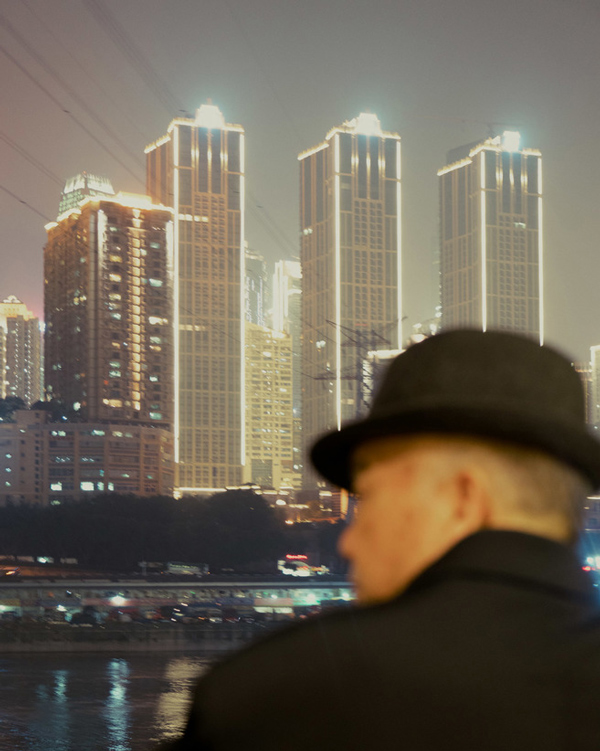
Davide Monteleone, A New Silk Road 004, 2017
© the artist
Davide Monteleone
In 2013, China’s president, Xi Jinping, announced a plan to re-create the Silk Road, a series of ancient routes established around 130 BCE and known for trafficking grain, spices, and myriad other goods between East and West. The Belt and Road Initiative, as China calls it, would be the most extensive infrastructure project in human history, with current cost estimates rising above one trillion dollars. The project aims to place China at the center of global trade, and to open the country to more influence in Asia. In 2017, Davide Monteleone journeyed through stretches of the proposed route. Beginning in Yiwu, a city about four hours southwest of Shanghai, he traveled to Khorgos, home to a massive dry port, and Aktau, Kazakhstan. One photograph shows field workers loading cotton into a large trailer, open fields stretching off into the horizon, while another frames a man against the neon cityscape of Chongqing, a clarion symbol of China’s urban future. As Jiayang Fan wrote of Monteleone’s series A New Silk Road, “If bridges, pipelines, and railroads are the arteries of the modern world, then China is positioning itself as the beating heart.”
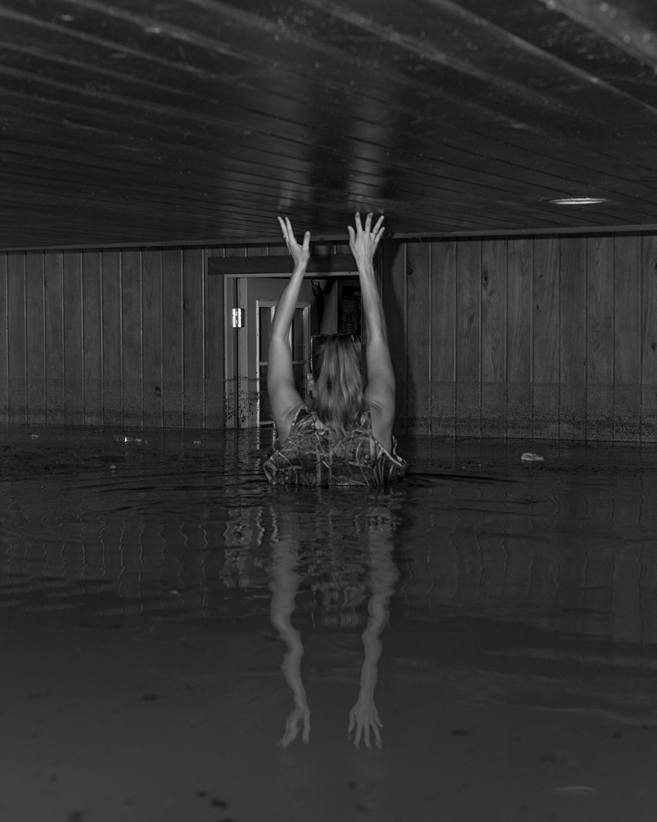
Philip Montgomery, Houston, Texas—Lauren Gundlach returns to her childhood home with her father after it was destroyed by floodwater. When 51 inches of rain fell over Houston during Hurricane Harvey, the reservoir held back water until it threatened to breach the dams. That’s when the government decided they had to open the gates, flooding West Houston’s Energy Corridor. Friday, September 1, 2017
© the artist
Philip Montgomery
“My country is not well,” says Philip Montgomery. “The feelings of optimism and progress that had been reflected in the election of our first black president have given rise to something else.” In his series Flash Points, Montgomery depicts the state of the union with trenchant precision. His black-and-white scenes, burnished with the light of an off-camera flash, span the United States, showing evictions in Wisconsin, flooding in Houston, riots in St. Louis, police brutality in Tulsa, Oklahoma, and political rallies in Philadelphia and Cleveland. Among the most powerful documents yet made of the opioid addiction crisis in the US, Montgomery’s series Faces of an Epidemic portrays the ravages of the disease in Montgomery County, Ohio, one of the worst-affected areas; the local morgue, he discovered, had run out of room for bodies. Fueled by the meteoric popularity of highly addictive painkillers, including Purdue Pharma’s star drug OxyContin, the surge of reliance on synthetic opioids has devastated whole communities, often in rural areas still suffering from the economic fallout of the 2008 recession. “As America once again reverts to fundamental questions of rights, liberty, and identity, I, too, am gathering evidence,” says Montgomery, “building the case that America is defined as much by its fissures as by its nostalgic fiction of greatness.”

Christian Sanna, Portrait before his fight on Nosy Komba beach, 2015
© the artist
Christian Sanna
An athlete squats, does a push-up, gulps water against a bleak sky as his skin glistens in the sun. He is not a runner, a boxer, or a baseball player, but a Moraingy fighter. Moraingy, an indigenous martial art practiced on the west coast of Madagascar, has long been practiced by the Sakalava people as a game, a means of defense, and as training for battle. More recently, the sport has become a form of resistance against the Westernization of the island in service of tourism. “During the Moraingy, the adversary is seen not as an enemy but as a means to forming and proving oneself,” says Christian Sanna, who was raised in Madagascar. In his recent photographs, Sanna focuses on the young inhabitants of Nosy Be, an island off the coast of Madagascar, where enthusiasm for the sport is particularly strong. Statuesque as Greek gods, suspended in time but surrounded by children and onlookers, Sanna’s subjects evoke the epic vocabulary of classic gladiators.
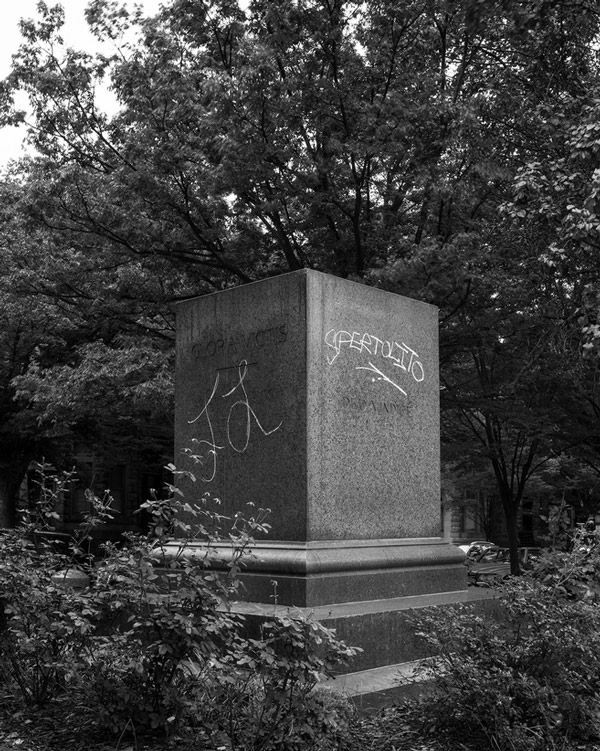
Matthew Shain, Post-Monuments, Baltimore, (Confederate Soldiers and Sailors, erected 1903), 2017
© the artist
Matthew Shain
What happens when a monument is pulled down, but the pedestal remains? Whose figure should fill that symbolic void? In a series of black-and-white images, Matthew Shain considers the residue of American history as described by the simultaneous presence and absence of memorials to Confederate heroes. In 2017, a year when the removal of monuments incited violence between neo-Nazis and protestors in Charlottesville, Virginia, and prompted an American president to claim that there were “very fine people on both sides,” Shain returned to primal scenes, transforming blank pedestals into ambivalent cenotaphs. In his measured, typological approach, like that of Bernd and Hilla Becher, Shain shows the repetition of these now unmonumental structures in American cities from Baltimore to New Orleans. Begun in an effort, as Shain says, to depict the “psychic weight” left behind by the “brutal legacy of white supremacy,” Shain’s photographs are less landscapes than still lifes—markers on a territory where painful memories live on.
Abdo Shanan
Abdo Shanan was born in Algeria to a Sudanese father and an Algerian mother. In 1991, just before the outbreak of the Algerian Civil War, a conflict that would last more than a decade, Shanan’s family moved to Libya, where he grew up among an international crowd. After graduating from university but facing dim job prospects, Shanan returned to Algeria in 2009. There, trying to make sense of his homecoming, he turned to photography, creating Diary: Exile, a series of grainy black-and-white photographs of friends, strangers, and enigmatic scenes of Oran. In Dry, his ongoing diptych series of portraits and cityscapes taken in Oran and often supplemented by audio interviews, Shanan considers the lives of migrants and refugees living in Algeria, many from sub-Saharan Africa, as well as the “Pied-Noirs,” French nationals who were born in Algeria under French colonial rule. Once in exile himself, he shares with his subjects the intimate connection to the conflicted idea of Algeria as a homeland, a place of past memories or current experience. “Sometimes during or after the meetings I cannot tell the difference between an immigrant or a Pied-Noir, a migrant, or a refugee,” Shanan says. “It feels as if we all share something that I cannot call identity, but more of a specificity.”

Shikeith, Still from to bathe a mirror, 2018. Video, 18:50 minutes, color, sound
© the artist
Shikeith
An artist, filmmaker, and photographer, Shikeith focuses on the metamorphoses of black men, often picturing his subjects nude as a way of exploring the specularity of the body. In his video to bathe a mirror, black male eroticism and spirituality are celebrated without resorting to clichés or objectification. “My photographs, much like my videos, are attempts at surfacing the erotic potential of black men and acquiring the unfixing that comes with what emerges,” he says. Photography has been his primary tool for making tangible what the artist has imagined to be a boundless, malleable black manhood waiting to be embodied. Shikeith’s ever-developing eye embraces sentimentality without being sentimental; to bathe a mirror, like his pictures, is a glorious event, which he calls an “act, an unraveling that perspires, breaks, and spills. It’s 2 a.m. Saturday night down at the basement party and 7 a.m. Sunday morning up in the pews of a black church.” Hallelujah.

Maria Sturm, Kearsey as a Vampire, 2016
© the artist
Maria Sturm
Since 2011, Maria Sturm has photographed teenagers from the Lumbee tribe in and around Pembroke, North Carolina, where almost 90 percent of the population identifies as Native American. Unlike other native tribes, the Lumbee were not forced to move during colonial expansion and have subsequently maintained a strong connection to their land. Sturm’s series You Don’t Look Native to Me considers how young Native people present themselves today in relation to their identity and culture. At first glance, Sturm’s photographs might appear to depict the daily life of a community almost anywhere in America, but elements of hybridity—Halloween fangs on a child in Tuscarora regalia; dreamcatchers and a school portrait on a living room wall—signify the mixing of heritage and contemporary culture.
The 2018 Aperture Summer Open, The Way We Live Now, is on view at Aperture Gallery through August 16, 2018. The exhibition is curated by Siobhán Bohnacker, senior photo editor, The New Yorker; Brendan Embser, managing editor, Aperture magazine; Marvin Orellana, photo editor, New York magazine; and Antwaun Sargent, independent writer and critic.











